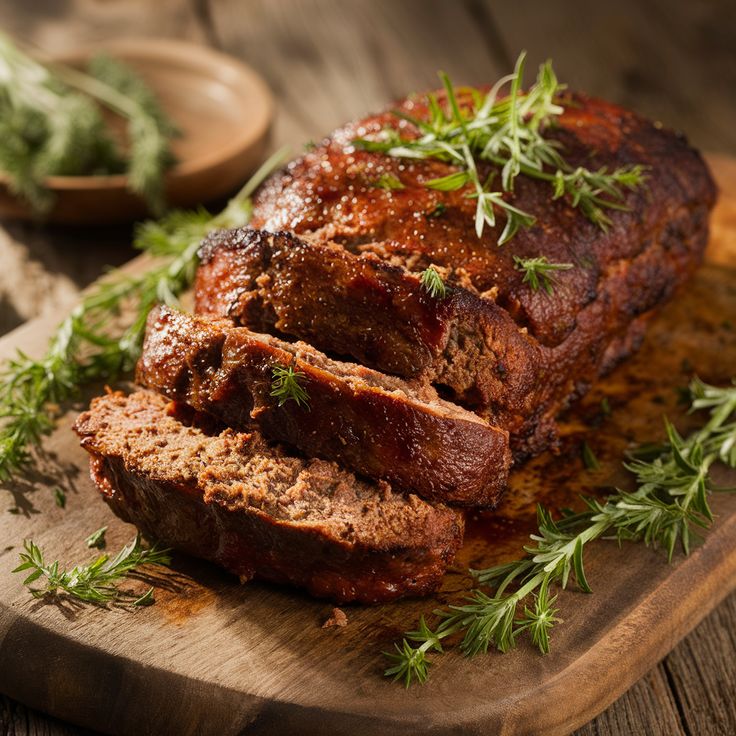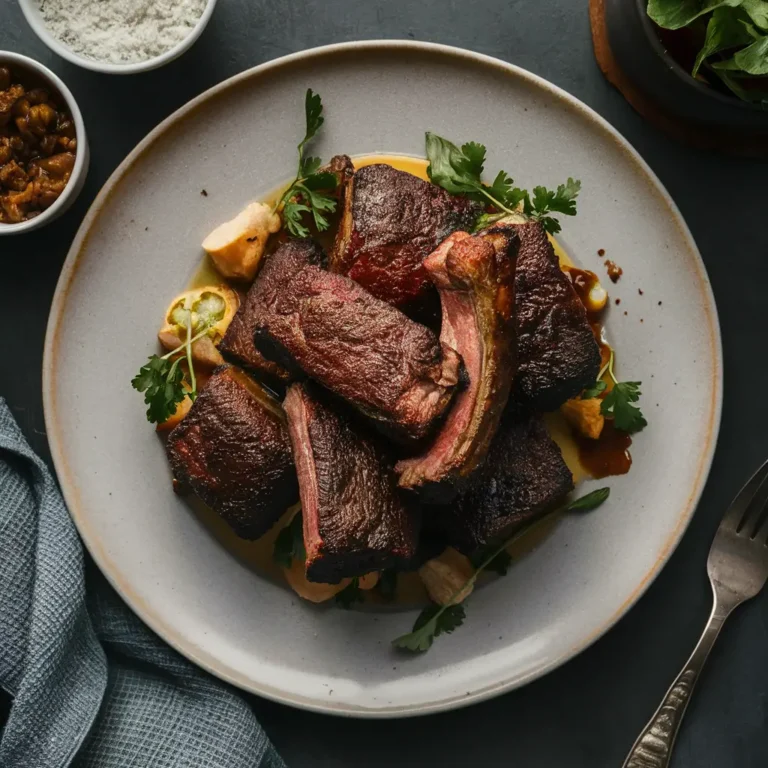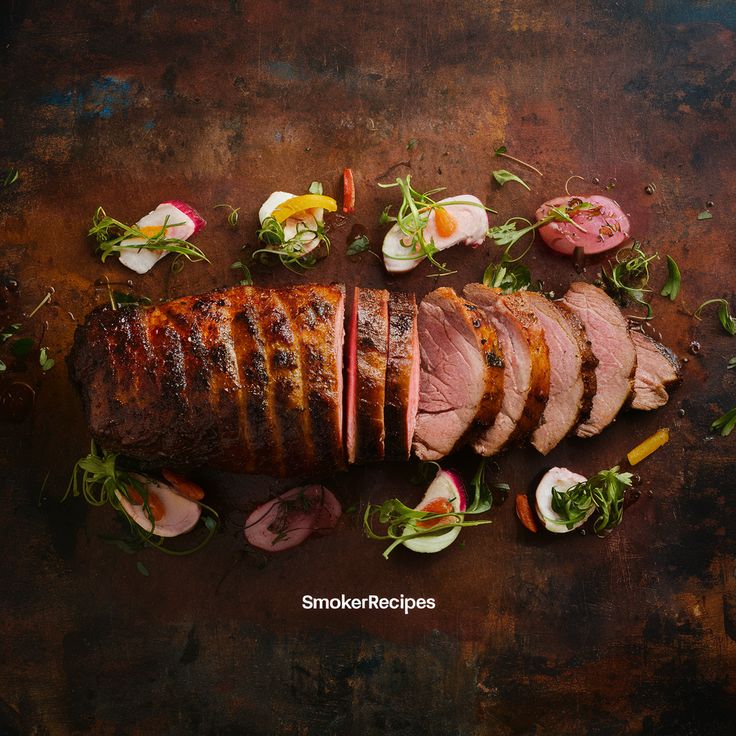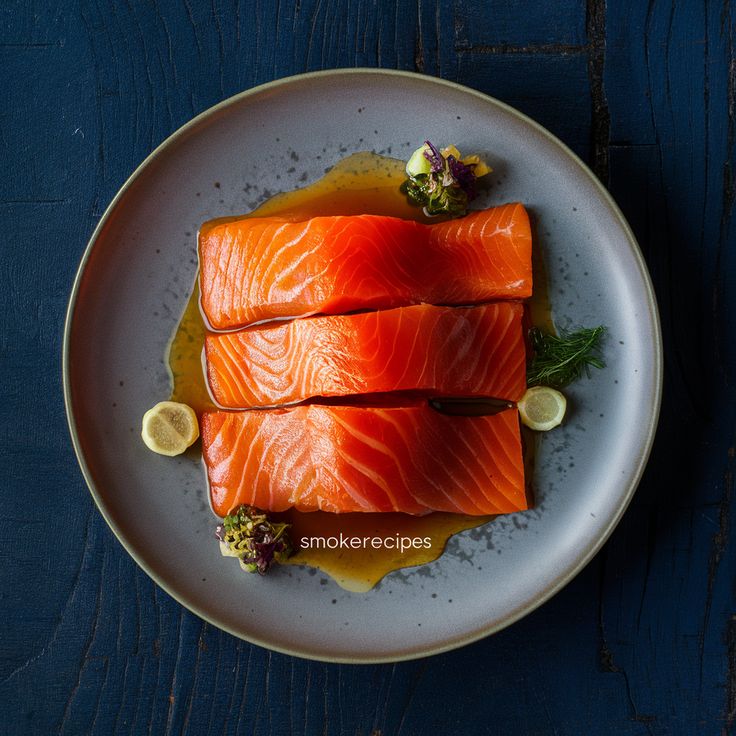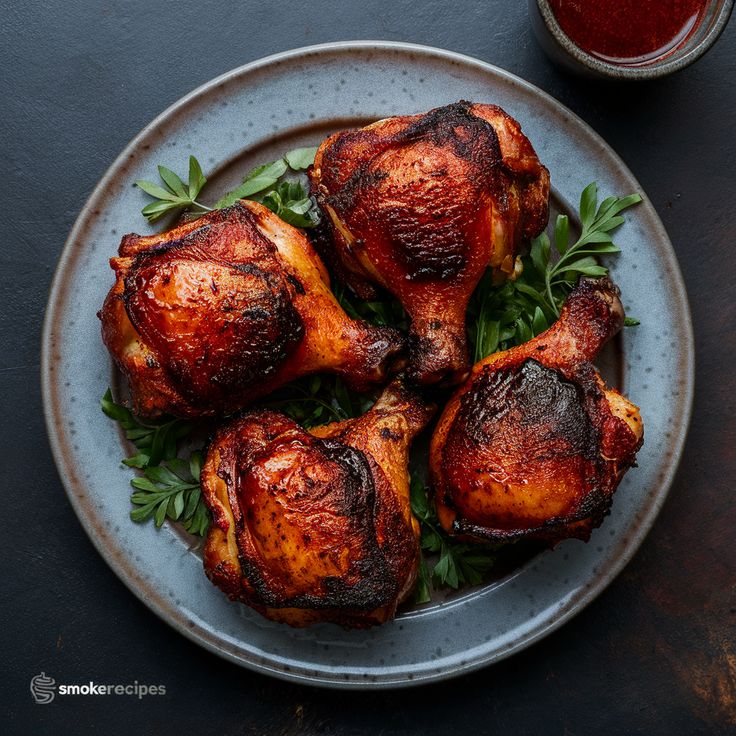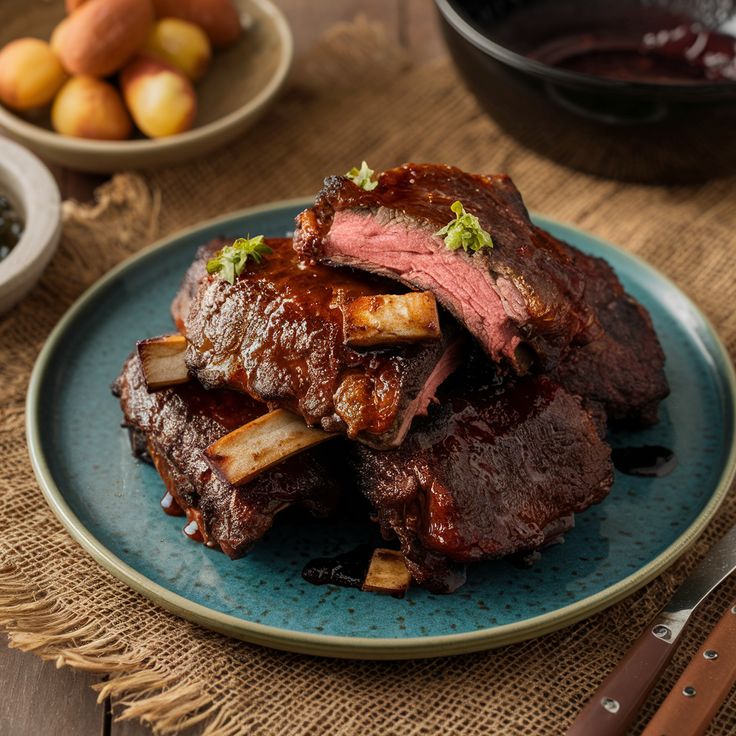Turkey pastrami: Discover the best 5 Expert Tips for Ultimate Flavor
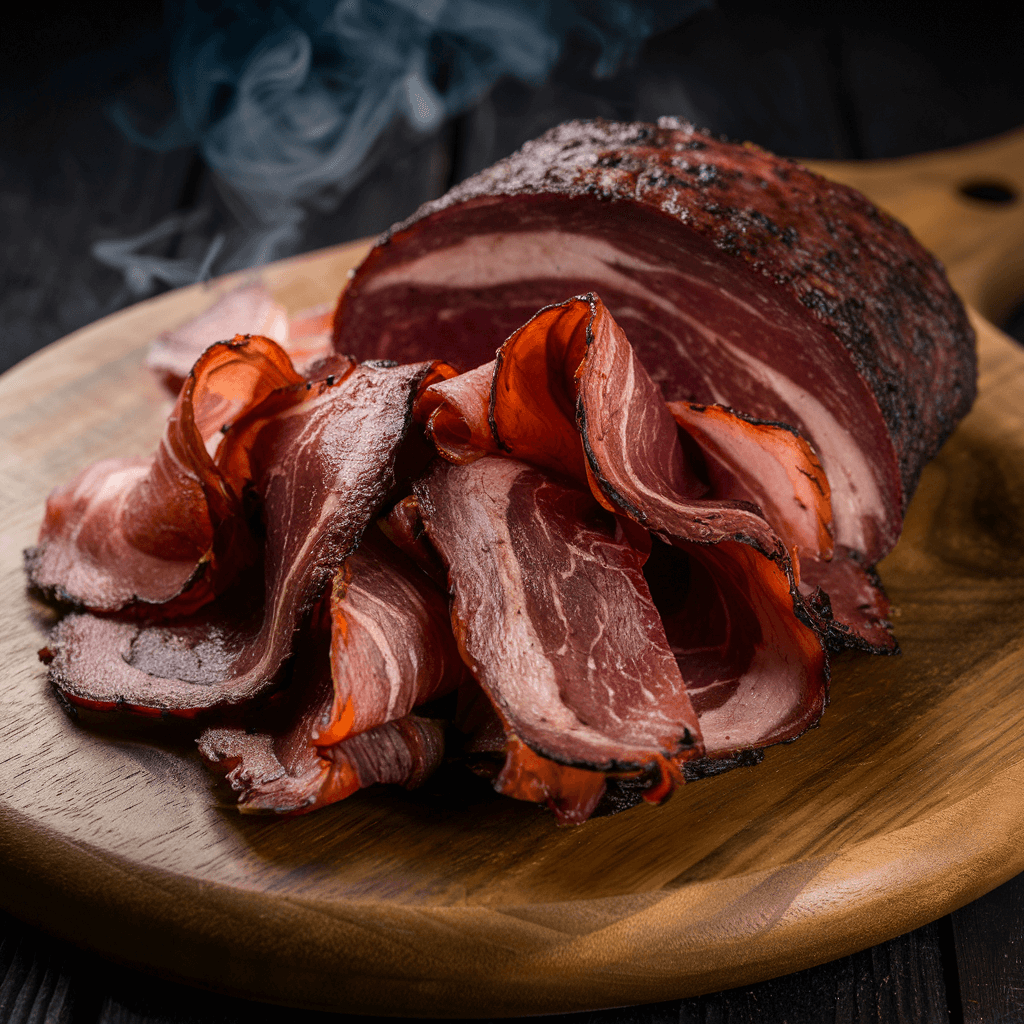
What is Turkey Pastrami?
Imagine walking into a bustling deli, the air thick with the smoky aroma of cured meats. Behind the counter, a chef slices a deep red, marbled slab of turkey pastrami, its edges glistening with a peppery crust. “This isn’t your average deli meat,” he says with a wink. “It’s a labor of love.” Turkey pastrami, a leaner cousin to the classic beef pastrami, is a modern twist on a centuries-old tradition. Originating from the Jewish delis of New York, pastrami was traditionally made from beef brisket, cured, smoked, and steamed to perfection. But as health-conscious eaters sought lighter options, turkey pastrami emerged as a flavorful alternative, offering the same smoky, spicy kick with fewer calories.
What makes turkey pastrami unique is its preparation. The turkey breast is brined in a mixture of salt, sugar, and spices like coriander, garlic, and black pepper. After curing, it’s smoked to infuse that signature smoky flavor, then steamed to achieve a tender, melt-in-your-mouth texture. Regional variations exist—some recipes add a touch of paprika or mustard seeds for extra depth—but the essence remains the same: a savory, spiced delicacy that’s as versatile as it is delicious. Whether piled high on a sandwich or served as a charcuterie centerpiece, turkey pastrami is a testament to culinary innovation. For more culinary inspiration, check out our Homepage.
- Get the ultimate Pastrami Rub recipe to elevate your next BBQ session.
Mastering Turkey Pastrami at Home
Creating turkey pastrami at home might sound daunting, but with the right tools and techniques, it’s entirely achievable. The process begins with a good-quality turkey breast, preferably skinless and boneless. A sharp knife, a reliable meat thermometer, and a smoker (or a stovetop smoker setup) are essential. If you’re short on time, pre-brined turkey breasts can be a lifesaver, though making your own brine allows for greater flavor customization.
Essential Tools and Ingredients
To start, you’ll need a large container for brining, a smoker or grill, and a steaming setup (a pot with a steamer basket works perfectly). The brine is the heart of the process—combine water, kosher salt, brown sugar, and spices like coriander, garlic, and black pepper. For an extra layer of flavor, consider adding a splash of apple cider vinegar or a dash of smoked paprika. Once the turkey breast has soaked in the brine for 24-48 hours, it’s ready for smoking.
Core Techniques for Perfect Results
Smoking is where the magic happens. Aim for a low and slow approach—225°F (107°C) is ideal. Use wood chips like hickory or applewood for a balanced smoky flavor. Smoke the turkey until it reaches an internal temperature of 150°F (65°C), which usually takes about 2-3 hours. The final step is steaming, which ensures the meat stays juicy and tender. Wrap the smoked turkey in foil, add a splash of water, and steam for about an hour. The result? A succulent, flavorful turkey pastrami that rivals any deli’s.
Pro Tips and Flavor Enhancements
For a deeper flavor profile, try dry-brining the turkey breast before wet-brining. Simply rub the meat with a mixture of salt, sugar, and spices, then let it sit uncovered in the fridge for 12 hours. This draws out moisture and intensifies the seasoning. Another tip: slice the pastrami against the grain for maximum tenderness. And don’t forget the crust—a generous coating of cracked black pepper and coriander before smoking adds a satisfying crunch.
Whether you’re a seasoned home cook or a curious beginner, making turkey pastrami at home is a rewarding experience. It’s a chance to connect with culinary traditions while putting your own spin on a classic. So roll up your sleeves, fire up the smoker, and get ready to impress your taste buds—and your guests. For more tips and recipes, don’t forget to visit our Homepage.
Table of Contents
📜 Historical Information
Pastrami, a beloved cured meat, traces its origins to Romania, where it was traditionally made with beef. Jewish immigrants brought the recipe to the United States in the late 19th century, where it became a staple of New York delis. Over time, pastrami has evolved, with modern versions like turkey pastrami offering a leaner, healthier alternative while retaining the bold, smoky flavors of the original.
🥕 What You’ll Need
Here’s everything you need to make turkey pastrami for 4 servings:
- 2 lbs turkey breast (preferably skinless and boneless; look for fresh, high-quality cuts with a pink hue and firm texture)
- 1/4 cup kosher salt (or sea salt for a cleaner flavor)
- 2 tbsp black peppercorns (coarsely ground; adds a robust, spicy kick)
- 2 tbsp coriander seeds (lightly toasted; enhances aroma and flavor)
- 2 tbsp smoked paprika (for that signature smoky taste)
- 1 tbsp garlic powder (adds depth and savory notes)
- 1 tbsp brown sugar (balances the saltiness; can substitute with coconut sugar for a healthier option)
- 1 tsp mustard seeds (optional; adds a tangy, slightly bitter note)
Health Benefits of Key Ingredients
- Turkey Breast: A lean protein source, turkey breast is low in fat and high in essential nutrients like selenium, which supports immune function, and B vitamins, which aid in energy metabolism.
- Coriander Seeds: Rich in antioxidants and known for their anti-inflammatory properties, coriander seeds also aid in digestion and promote heart health.
Nutrition Facts (Per Serving)
| Calories | Protein | Fat | Carbohydrates | Sodium |
|---|---|---|---|---|
| 180 kcal | 28g | 4g | 3g | 800mg |
👩🍳 Cooking Instructions
Turkey pastrami: 5 Expert Tips for Ultimate Flavor
Cuisine: American8
servings30
minutes1
hour220
kcal1
hour30
minutesIngredients
- Turkey Pastrami Recipe
- Brine (Curing Mixture)
1 (3-4 lb) skinless, boneless turkey breast
1/4 cup kosher salt
2 tablespoons brown sugar
1 tablespoon crushed black peppercorns
1 tablespoon crushed coriander seeds
2 garlic cloves, smashed
4 cups water
1 teaspoon pink curing salt (optional, for authentic color)
- Spice Rub (Coating)
2 tablespoons coarsely ground black pepper
1 tablespoon crushed coriander seeds
1 teaspoon smoked paprika
1 teaspoon garlic powder
1 teaspoon onion powder
Directions
- Preparation
- Step 1: Brine the Turkey**
- Combine water, kosher salt, brown sugar, crushed peppercorns, coriander seeds, garlic, and pink curing salt (if using) in a pot.
- Bring to a simmer, stirring until all solids dissolve; then allow the brine to cool completely.
- Submerge the turkey breast in the cooled brine, cover, and refrigerate for 24-48 hours.
- Step 2: Apply the Spice Rub**
- Remove the turkey from the brine, rinse thoroughly under cold water, and pat dry with paper towels.
- In a small bowl, mix together all the spice rub ingredients.
- Rub the spice mixture evenly over the entire turkey breast, ensuring a good coating on all sides.
- Step 3: Cook the Turkey Pastrami**
- Option 1: Oven Method**
- Preheat your oven to 300°F (150°C).
- Place the spiced turkey breast on a rack in a roasting pan.
- Roast for 2 to 2.5 hours, or until the internal temperature reaches 165°F (75°C).
- Option 2: Smoker Method**
- Preheat your smoker to 225°F (107°C).
- Smoke the turkey breast for approximately 3 to 4 hours until it reaches an internal temperature of 165°F (75°C).
- Use wood chips like hickory or applewood for an authentic smoky flavor.
- Step 4: Rest and Slice**
- Remove the turkey from the oven or smoker and let it rest for 15 minutes to allow the juices to redistribute.
- Slice thinly against the grain to achieve tender, deli-style pastrami.
- Serving Suggestions**
- Enjoy in a classic pastrami sandwich on rye bread with mustard and pickles.
- Serve over salads or as part of a charcuterie board.
- Store leftovers in an airtight container in the refrigerator for up to 5 days, or freeze for longer storage.
1. Prep Work
Gather your tools: a sharp knife, a mixing bowl, a large resealable plastic bag, a baking sheet, and a meat thermometer. To save time, toast the coriander seeds and grind the spices in advance. This recipe requires about 30 minutes of prep and 2-3 hours of cooking time.
2. Core Technique Walkthrough
Start by patting the turkey breast dry with paper towels. In a bowl, mix the salt, black pepper, coriander seeds, smoked paprika, garlic powder, brown sugar, and mustard seeds. Rub the spice mixture evenly over the turkey, ensuring it’s fully coated. Place the turkey in a resealable bag and refrigerate for at least 12 hours (or up to 24 hours) to allow the flavors to penetrate.
Preheat your oven to 300°F (150°C). Remove the turkey from the bag and place it on a baking sheet lined with parchment paper. Roast for 2-3 hours, or until the internal temperature reaches 165°F (74°C).
3. Doneness Indicators
The turkey pastrami is done when it’s firm to the touch, has a deep reddish-brown crust, and reaches the safe internal temperature of 165°F (74°C). Let it rest for 10 minutes before slicing thinly against the grain.
4. Pro Preservation Method
Store leftover turkey pastrami in an airtight container in the refrigerator for up to 5 days. For longer storage, wrap it tightly in plastic wrap and freeze for up to 3 months. Thaw in the fridge before reheating.
🌍 Creative Variations
Dietary Needs
For a lower-sodium version, reduce the salt by half and use a salt substitute. You can also swap brown sugar with a sugar-free alternative like stevia for a diabetic-friendly option.
Regional Flavors
- Tex-Mex Twist: Add 1 tbsp chili powder and 1 tsp cumin to the spice mix for a smoky, spicy kick.
- Mediterranean Flair: Incorporate 1 tbsp dried oregano and 1 tsp lemon zest for a bright, herbaceous flavor.
Seasonal Ingredients
In the fall, add a pinch of ground cinnamon and nutmeg to the spice mix for a warm, autumnal flavor. In the summer, garnish with fresh herbs like dill or parsley for a refreshing touch.
Final Thoughts
Turkey pastrami is a versatile, healthier alternative to traditional beef pastrami, perfect for sandwiches, salads, or charcuterie boards. With its rich history and endless customization options, this recipe is sure to become a staple in your kitchen. Happy cooking!
Insider Techniques for Turkey Pastrami
Reveal 3 rarely-shared professional methods covering:
- Texture Mastery (Crispy/Tender Balance): Achieving the perfect texture in turkey pastrami requires a two-step process. First, brine the turkey breast for at least 24 hours to ensure deep moisture penetration. Second, smoke the turkey at a low temperature (around 225°F) for 3-4 hours, followed by a quick sear to create a crispy exterior while maintaining a tender interior.
- Flavor Layering (Herb/Spice Timing): Timing is crucial when layering flavors. Apply a dry rub of coriander, black pepper, garlic powder, and paprika immediately after brining. Let it rest for 12 hours to allow the spices to penetrate the meat. During smoking, add fresh herbs like thyme and rosemary to the smoker for an aromatic boost.
- Time-Saving Prep Hacks: Use a vacuum sealer to marinate the turkey breast in just 2 hours instead of 24. Additionally, pre-mix your dry rub in bulk and store it in an airtight container for future use, saving precious prep time.
Storage Instructions for Turkey Pastrami
Detail optimal methods for:
- Short-Term (3 Days): Store in an airtight glass container in the refrigerator. Glass prevents odor transfer and maintains freshness better than plastic.
- Long-Term (3 Months): Wrap the pastrami tightly in plastic wrap, then in aluminum foil, and freeze. For best results, use a vacuum sealer to remove all air before freezing.
- Revival Techniques for Dried-Out Portions: Rehydrate dried-out pastrami by steaming it for 5-7 minutes. Alternatively, slice it thinly and simmer in a flavorful broth for 10 minutes to restore moisture.
Plate Perfection
Suggestions for:
- Occasion-Based Presentation (Casual vs Gourmet): For casual settings, serve thick slices on a wooden board with pickles and mustard. For gourmet presentations, thinly slice the pastrami and arrange it in a fan shape on a white plate, garnished with microgreens and a drizzle of balsamic reduction.
- Garnish Pairings (Herb/Edible Flower Matches): Pair with fresh dill, parsley, or edible flowers like nasturtiums for a vibrant touch. These garnishes add both visual appeal and complementary flavors.
- Temperature Control During Service: Serve turkey pastrami at room temperature to enhance its flavors. If serving hot, keep it warm in a low oven (170°F) and cover with foil to prevent drying out.
Fix Common Issues
Solutions for:
- Over-Seasoning Fixes: If the pastrami is too salty, soak it in cold water for 1-2 hours, changing the water every 30 minutes. For overly spicy pastrami, balance it with a creamy sauce like horseradish aioli.
- Texture Rescue Methods: If the pastrami turns out too tough, slice it thinly against the grain and steam it briefly to soften. For overly dry pastrami, brush it with a light coat of olive oil before serving.
- Flavor Balancing Acts: If the flavors are too intense, serve with mild accompaniments like mashed potatoes or a simple green salad. For bland pastrami, enhance it with a bold mustard or a tangy barbecue sauce.
Harmonious Combinations
Recommend pairings across:
- Beverages (Wine/Beer/Non-Alc): Pair with a robust red wine like Zinfandel, a malty beer like brown ale, or a non-alcoholic option like spiced apple cider.
- Side Dishes (Starch/Veg Contrasts): Serve with creamy mashed potatoes, roasted root vegetables, or a tangy coleslaw for a balanced meal.
- Sauce Pairings (Creamy/Acidic Balances): Complement with a creamy horseradish sauce, a tangy mustard, or a sweet and spicy barbecue sauce to enhance the flavors.
John Marshall’s pro kitchen secrets: Mastering turkey pastrami is all about precision and creativity. By following these techniques and tips, you’ll elevate your culinary skills and impress your guests with every bite.“`
Ingredient Flexibility of Turkey Pastrami
Explore substitutions for:
When making turkey pastrami, ingredient flexibility is key to accommodating dietary needs, regional availability, and flavor preferences. For dietary restrictions, consider using gluten-free soy sauce or tamari for a gluten-free version, or opt for a vegan-friendly spice rub. If certain spices are unavailable in your region, experiment with local alternatives like smoked paprika or cumin to maintain a rich flavor profile. For those seeking a different taste, try adding honey or maple syrup for sweetness, or swap traditional spices with herbs like thyme or rosemary for a unique twist.
Troubleshooting Guide
Address common issues like:
Texture problems can arise when making turkey pastrami. If your pastrami is too dry, try brining the turkey longer or basting it during cooking. For a too moist result, reduce the brining time or pat the turkey dry before seasoning. Balancing flavors is crucial—avoid over-seasoning by measuring spices carefully and tasting as you go. If the flavor is too intense, dilute the seasoning mix or add a touch of sweetness. Cooking time adjustments may be needed based on your oven or smoker; use a meat thermometer to ensure the internal temperature reaches 165°F (74°C).
How much kosher salt should you use to brine a turkey?
The standard ratio for a turkey brine using kosher salt is generally:
1/2 cup of kosher salt per gallon of water This ratio works well for most whole turkeys (12–16 lbs)
Adjust slightly based on your recipe or if using a different type of salt (e.g., table salt is more concentrated)
Tip: Always ensure the salt is fully dissolved in the water before adding the turkey.
How do you make a kosher salt brine?
Making a basic kosher salt brine is simple and effective:
Combine Ingredients: Water (usually 1 gallon)
Kosher salt (1/2 cup per gallon)
Optional: Add 1/2 cup sugar to balance flavors and promote browning
Enhance with Aromatics: Add herbs (rosemary, thyme, bay leaves), garlic, peppercorns, or citrus slices for extra flavor
Dissolve the Salt: Stir the mixture until all the salt (and sugar) is completely dissolved
Cool the Brine: If the brine was heated to help dissolve the salt, allow it to cool completely before submerging the turkey
How do you brine a wild turkey breast?
Wild turkey breast, being leaner, benefits greatly from a careful brine:
Use the Same Basic Ratio: Use about 1/2 cup kosher salt per gallon of water (adjust if preparing a smaller batch)
Shorter Brining Time: Brine wild turkey breast for 4-6 hours rather than the 12–24 hours often used for whole turkeys
Include Flavor Boosters: Incorporate aromatics like garlic, citrus, or fresh herbs to enhance flavor without overwhelming the lean meat
Monitor the Process: Avoid over-brining to prevent an overly salty flavor and to maintain the delicate texture of wild turkey
Do kosher turkeys need to be brined?
Even though kosher turkeys undergo a koshering process (which involves soaking and salting to remove blood), additional brining can still be beneficial:
Koshering vs. Brining: The koshering process focuses on purification and is not intended to fully tenderize or flavor the meat
Moisture and Flavor Enhancement: A traditional brine will help ensure the turkey remains moist and enhances its natural flavors
Optional Step: Brining is recommended if you’re looking for extra juiciness and a deeper flavor profile, regardless of whether the turkey is kosher or not
Make-Ahead Strategies
Detail methods for:
Preparing turkey pastrami in advance can save time. For partial prep, brine and season the turkey a day ahead, storing it in the fridge until ready to cook. For full recipe freezing, cook the pastrami, let it cool, and slice it before freezing in airtight containers. Reheat slices in a skillet or oven for best results. Store cooked pastrami in the fridge for up to 5 days or freeze for up to 3 months. Reheat gently to preserve moisture and flavor.
Health-Conscious Options
Provide alternatives for:
For a lower-calorie version, use lean turkey breast and reduce added fats like oil in the seasoning mix. To adjust macronutrients, focus on high-protein options by using skinless turkey and pairing it with low-carb sides like roasted vegetables. For allergen-free variations, ensure all spices and brines are free from common allergens like soy or gluten. Consider using coconut aminos instead of soy sauce for a soy-free option.
Taste Personalization
Suggest modifications for:
Customize your turkey pastrami to suit your taste preferences. Adjust the spice level by reducing or increasing cayenne pepper or black pepper. Incorporate regional flavors by adding ingredients like smoked paprika for a Spanish twist or five-spice powder for an Asian-inspired version. For kid-friendly adaptations, reduce the spice level and add a touch of sweetness with honey or brown sugar in the seasoning mix.“`
Key Takeaways of Turkey Pastrami
Congratulations! You’ve just unlocked the secrets to making mouthwatering turkey pastrami at home. This recipe is more than just a dish—it’s a culinary adventure that combines technique, flavor, and tradition. Here’s what you’ve mastered:
- Essential Techniques: From brining to smoking, you’ve learned how to infuse turkey with deep, smoky flavors while keeping it tender and juicy.
- Special Ingredients: The blend of coriander, black pepper, and garlic in the rub, along with the curing process, gives this pastrami its signature taste.
- Cultural Significance: Pastrami has a rich history, and this turkey version is a lighter, modern twist that still honors its roots.
Whether you’re a seasoned smoker or a beginner, this recipe is a testament to how approachable and rewarding homemade pastrami can be.
Your Culinary Journey Starts Here
Now that you’ve got the recipe, it’s time to take action! Here’s how you can make the most of this delicious dish:
- Try It This Week: Gather your ingredients and carve out some time to make this turkey pastrami. Trust us, the effort is worth it!
- Share Your Creations: Snap a photo of your masterpiece and share it on social media. We’d love to see your results!
- Tag Us for Feedback: Use the hashtag #SmokerRecipes and tag @SmokerRecipes so we can cheer you on and share your work with our community.
Remember, every great chef started with a single recipe. This could be the one that sparks your passion for smoking and curing meats!
Join Our Foodie Family
Cooking is always better when shared. Let’s stay connected and keep the inspiration flowing:
• Follow on Instagram: Get daily inspiration, behind-the-scenes tips, and mouthwatering recipes by following @Smokerrecipes.
• Explore Pinterest Boards: Dive into our curated boards for more dessert ideas, seasonal recipes, and creative plating tips.
• Join Our Facebook Group: Connect with fellow foodies, share your cooking triumphs, and get advice in our friendly Facebook community.
We’re here to support you every step of the way—because food tastes better when it’s shared with friends.
Expand Your Skills
Ready to take your cooking to the next level? Here are some ideas to keep the momentum going:
- Related Recipes: Try your hand at smoked turkey breast or homemade corned beef for a similar flavor profile.
- Seasonal Variations: Experiment with different spice blends or smoking woods to match the season—applewood in the fall, hickory in the winter.
- Cooking Challenges: Push yourself with a 24-hour brine or a multi-meat smoking session. You’ll be amazed at what you can achieve!
Every recipe is a stepping stone to becoming a more confident and creative cook. Keep exploring, and don’t be afraid to make each dish your own.
Thank you for joining us on this flavorful journey. We can’t wait to see what you create next. Happy smoking!


